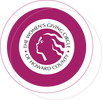U.S. and Maryland Highlights
The State of Women and Girls in Howard County highlights that, while women have been shattering glass ceilings, many disparities remain, including:
|
|
Howard County Highlights
In The State of Women and Girls in Howard County the WGC presents information about Howard County in similar categories as the Maryland Commission for Women's recently released Maryland Women: A Status Report in order to remain consistent with the state’s analysis. The six categories are as follows:
|
Demographics and Diversity:
Work and the Economy:
Education and Educators:
|
Health and Wellbeing:
Safety and Justice:
|
